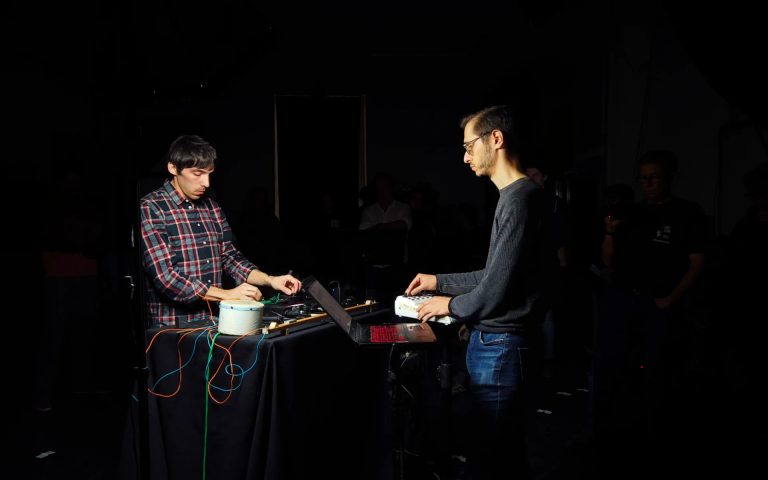This performance explores the phenomenon of sonic synchronization between two heterogeneous feedback systems by means of improvisation. The application of chaotic systems to creative musicking is associated with spontaneous play, since this practice can deal with the intractable traits that characterize such systems (non-linearity, non-periodicity, unpredictability, unrepeatability). Synchronization is a well-understood phenomenon where chaotic systems with different trajectories and oscillating frequencies, converge to identical ones when coupled. The “confluent currents” performance investigates this unique feature, by interconnecting two different feedback systems (analog-digital), allowing their idiosyncratic signal flows to exert influences to each other and resonate at unexpected frequencies.
The first feedback system consist of various electromagnetic string instruments that re-inject feedback signals into the strings, creating evolving resonances which depend on the contraction and expansion of the strings due to alterations in temperature. The physical manifestation of this system obliges the performer to make delicate gestures in order to locate the “resonant spots” of the instrument’s components. The second feedback system is a digital generative feedback network implemented with the PureData programming environment. A far-from-equilibrium drive of the non-linear oscillators produce mellifluous sonic streams of explosive and recalcitrant character.
The performers try to push their systems towards equilibrium states, where the internal dynamics settle to steady frequencies. Then the phenomenon of synchronization takes place, with the two frequencies starting to approximate a harmonic relationship. Sometimes this proximity cannot occur due to unconformity between the current individual states. After a successful or failed synchronization, the performers will search for new equilibria, by perturbing the current states and traversing unexplored routes of tumultuous activity
In collaboration with Arthur Lanotte-Fauré
